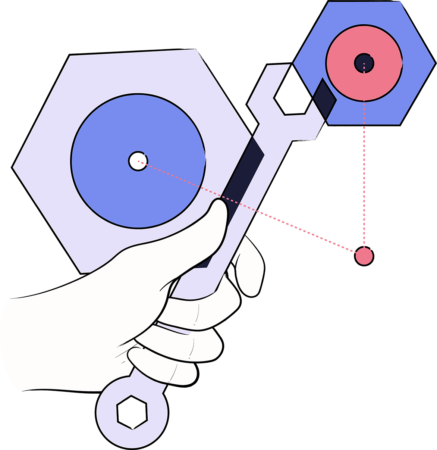



























































What is the difference between route optimisation and mobile work optimisation?
Perhaps you have already tried optimisation in your business, but were disappointed with the results?
You may have noticed that route optimisation creates efficient routes, but automated job planning still fails? You’re missing tasks, schedules are getting stretched and too many easy tasks are piling up for the most experienced workers. This is often because traditional route optimisation tools do not take into account the specificities of mobile work.
But what is the difference between these two forms of optimisation?
Route optimisation is a technology that aims to find the shortest or fastest route to predefined tasks. Optimisation makes use of heuristic models, which are decision-making methods that can be used to quickly find good enough solutions to complex problems. These models are used in particular in situations where computational power constraints or time constraints prevent the search for perfect solutions.
The efficiency of route optimisation can be improved by enriching the data used, for example by taking into account real-time traffic conditions and fuel consumption. Such use of data allows for more accurate and practical route planning. For example, in transport logistics, route optimisation can significantly reduce costs and improve delivery speeds.
However, the focus of route optimisation is narrowly on route planning. It does not determine which tasks are prioritised, to whom they are allocated or how schedules are adapted to the different skills of employees and the needs of customers.

Optimising mobile work: a holistic solution
- Prioritising tasks: AI assesses the urgency and economic value of tasks, ensuring the most important jobs are completed on time.
- Allocation of resources: Efficient allocation of tasks based on the skills, location and working hours of employees.
- Optimising schedules: Busy and complex tasks are seamlessly coordinated with other tasks, reducing wasted time.
- Dynamic response: Changes such as sick leave, equipment breakdowns or the addition of new tasks can be reacted to in seconds using artificial intelligence.
These help optimise mobile working to maximise business productivity and reduce manual planning by an employee or team.
How do Dynamik and Allocator solve the problem?
Allocator is specifically designed for the challenges of mobile work. It combines route optimisation and intelligent resource management into a single solution that adapts to your business needs.
A unique revenue-generating model: The Allocator allows you to assign an individual economic weight to each job, agent and shift. This allows you to optimise your allocation to focus on the factors that matter most to your business.
Quick response: Changes in schedules or work queues are handled in seconds. AI provides ready-made plans, but always allows for manual editing.
Measurable benefits for our customers: Allocator users have reported up to 20% improvements in resource efficiency and billable work.
For mobile work optimisation that really works, contact Dynamik. We help you achieve more with less.


Dynamik - the mobile work optimisation expert
Dynamik specialises in the challenges of optimising mobile work. Our cloud-based Allocator solution uses AI at every stage of the job planning process, prioritising tasks, optimising schedules and minimising displacements. With our system, our customers have achieved significant savings in time and costs, while employee satisfaction has increased thanks to a fair and equitable distribution of work.
Optimise your business